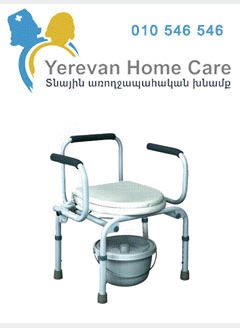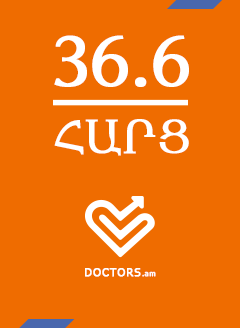Ebstein anomaly is a congenital defect of the heart that is characterized by apical displacement of the septal and posterior tricuspid valve leaflets, leading to atrialization of the right ventricle with a variable degree of malformation and displacement of the anterior leaflet.
Wilhelm Ebstein first described a patient with cardiac defects typical of Ebstein anomaly in 1866. In 1927, Alfred Arnstein suggested the name Ebstein's anomaly for these defects. In 1937, Yates and Shapiro described the first case of the anomaly with associated radiographic and electrocardiographic data.
Signs and symptoms
Ebstein's anomaly can range from very mild to very severe. Many patients with milder forms of Ebstein's anomaly do not have symptoms are diagnosed due to the presence of a heart murmur. Abnormal or extra heart sounds may also be present on the physical examination.
Some babies and children have bluish discoloration to their lips and nail beds (cyanosis), due to the flow of blood from the right atrium to the left atrium. Children may complain that their heart races, skips a beat, “beats funny” or "hiccoughs." They may tire more easily than other children or become short of breath, particularly during play. In adolescents and young adults, the sensation of "heart skipping" (palpitations) or fast heart rate, shortness of breath, and chest pain may be the first symptoms. Growth and development are usually normal in patients with Ebstein's anomaly.
Severely affected babies are often critically ill at birth, with low oxygen saturations (cyanosis) and heart failure requiring intensive care.
Pathophysiology
The embryological development of tricuspid valve leaflets and chordae involves undermining of the right ventricular free wall. This process continues to the level of the atrioventricular (AV) junction. In Ebstein anomaly, this process of undermining is incomplete and falls short of reaching the level of the AV junction. In addition, the apical portions of the valve tissue, which normally undergo resorption, fail to resorb completely. This results in distortion and displacement of the tricuspid valve leaflets, and a part of the right ventricle becomes atrialized. In one study involving 50 hearts with the anomaly, the entire right ventricle was found to be morphologically abnormal.
Ebstein anomaly is commonly associated with other congenital, structural, or conduction system disease, including intracardiac shunts, valvular lesions, and accessory conduction pathways (eg, Wolff-Parkinson-White [WPW] syndrome).
The hemodynamic consequences of Ebstein anomaly result from displaced and malformed tricuspid leaflets and atrialization of the right ventricle. The leaflet anomaly leads to tricuspid regurgitation. The severity of regurgitation depends on the extent of leaflet displacement, ranging from mild regurgitation with minimally displaced tricuspid leaflets to severe regurgitation with extreme displacement.
The atrialized portion of the right ventricle, although anatomically part of the right atrium, contracts and relaxes with the right ventricle. This discordant contraction leads to stagnation of blood in the right atrium. During ventricular systole, the atrialized part of the right ventricle contracts with the rest of the right ventricle, which causes a backward flow of blood into the right atrium, accentuating the effects of tricuspid regurgitation.
Causes
Ebstein anomaly is a congenital disease of often uncertain cause.
Environmental factors implicated in etiology include the following:
Maternal ingestion of lithium in first trimester of pregnancy
Maternal benzodiazepine use
Maternal exposure to varnishing substances
Maternal history of previous fetal loss
Risk is higher in whites than in other races.
Treatment
Treatment of Ebstein anomaly is complex and dictated mainly by the severity of the disease itself and the effect of accompanying congenital structural and electrical abnormalities. Treatment options include medical therapy, radiofrequency ablation, and surgical therapy.
Antibiotic prophylaxis for infective endocarditis
Medical therapy for heart failure - Angiotensin-converting enzyme (ACE) inhibitors, diuretics, and digoxin
Arrhythmia treatment - Medical treatments such as anti-arrhythmic drugs or radiofrequency ablation of the accessory pathways
Curative therapy of SVT with radiofrequency ablation is currently the treatment of choice.
The success rate is lower than that in patients without significant structural heart disease.
Factors associated with lower likelihood of success include the following:
Accessory pathways located along the atrialized right ventricle
Multiple accessory pathways
Complex geometry of the pathways
Abnormal morphology of the endocardial action potentials in this region.
Surgical care
Surgical care includes correction of the underlying tricuspid valve and right ventricular abnormalities, correction of any associated intracardiac defects, palliative procedures in early days of life as a bridge to more definitive surgical treatment later, and surgical treatment of associated arrhythmias. Complete repair of Ebstein anomaly in symptomatic neonates has been shown to be feasible, with good early and late survival and excellent functional status.
Indications for surgery are generally as follows:
New York Heart Association (NYHA) class I-II heart failure with worsening symptoms or with a cardiothoracic ratio of 0.65 or greater NYHA class III-IV heart failure.
History of paradoxical embolism
Significant cyanosis with arterial O2 saturation of 80% or less and/or polycythemia with hemoglobin of 16 g/dL or more
Arrhythmias refractory to medical and radiofrequency ablation
Generally, the trend is to perform surgery earlier rather later in the course of heart failure.
Various approaches are available to treat structural abnormalities.
Tricuspid valve repair is preferred over valve replacement, and bioprosthetic valves are preferred over mechanical prosthetic valves.
The atrialized portion of the right ventricle can be resected surgically, and the markedly dilated, thin-walled right atrium can be resected.
Associated septal defects may be closed.
Palliative procedures include creation of atrial septal defect, closure of tricuspid valve with plication of the right atrium, and maintenance of pulmonary blood flow through aortopulmonary shunt. Palliative procedures usually are reserved for severely ill infants with otherwise dire prognosis.
Left ventricular dysfunction should not be considered a contraindication to tricuspid valve surgery. In these patients, although early mortality is greater with tricuspid valve surgery, the late results are favorable and left ventricular function seems to improve postoperatively.
Functional status improves after surgery.
Surgical treatments of arrhythmias include the following:
Ablation of the accessory pathways
Maze procedure for atrial arrhythmias
Cardiac transplantation is appropriate in selected patients.












